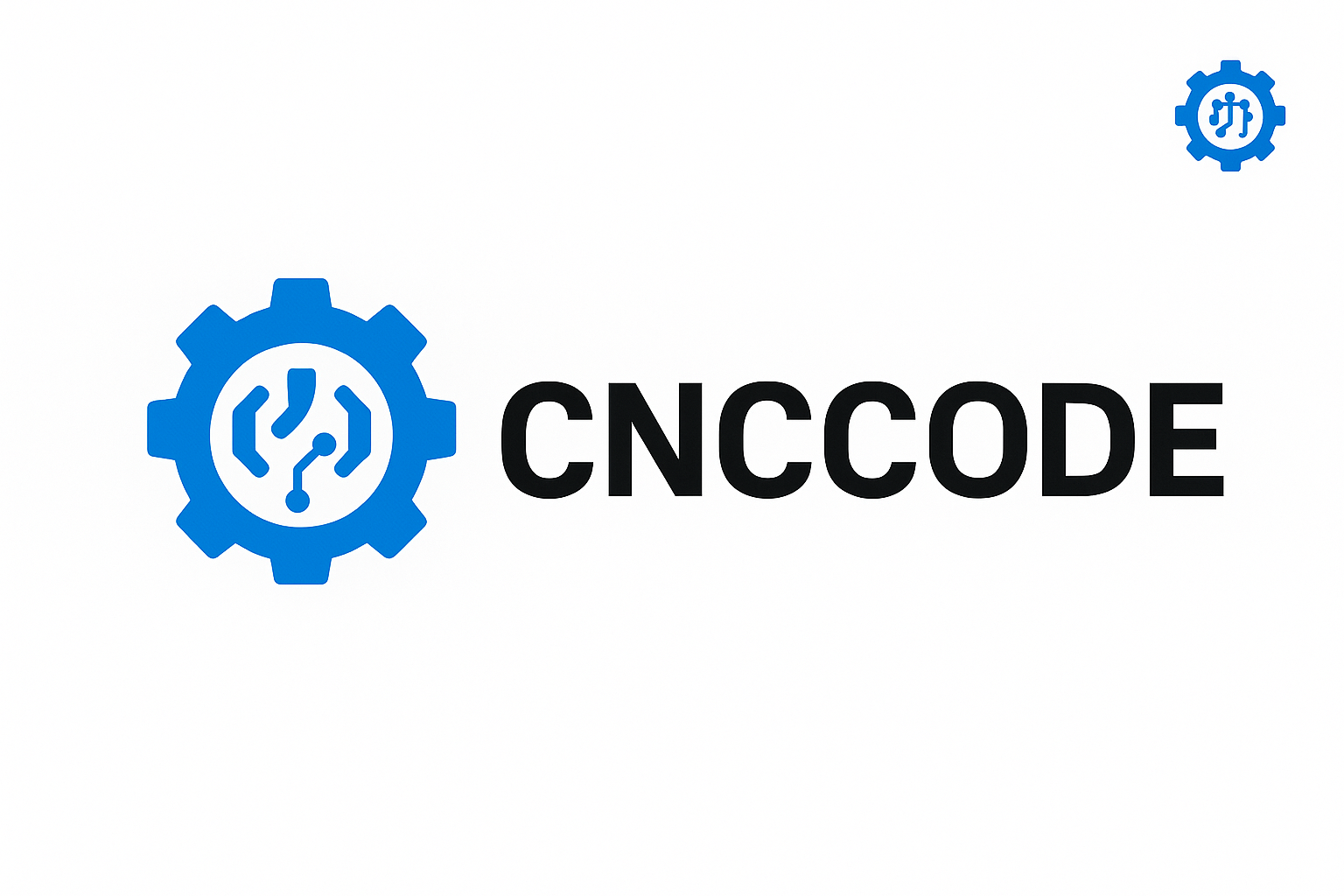🔧 Introduction
Understanding CNC programming is not just about knowing the syntax — it’s about mastering logic, efficiency, and safety in every part you machine. At cnccode.com, we bring you an expert-level breakdown of CNC essentials including G-code, M-code, tool offsets, cycles, and work coordinate systems that every machinist must know.
🧠 1. What Is G-Code and Why Does It Matter?
G-code is the instruction language that tells your CNC machine what to do. Commonly used G-codes:
| G-code | Function |
|---|---|
| G00 | Rapid positioning |
| G01 | Linear interpolation (cutting) |
| G02/G03 | Circular interpolation (clockwise / counter) |
| G17-G19 | Plane selection |
| G20/G21 | Units: inch/mm |
| G90/G91 | Absolute/Incremental movement |
🧠 Pro Tip: Always define the unit system (G21 or G20) at the top of your program for clarity.
🔄 2. Tool Offsets and Length Compensation
gcodeT1 M06 ; Tool 1 - Load
G43 H1 Z100 ; Activate length offset
H1refers to the tool length offset stored in the tool table.- Always retract to a safe
Zbefore tool change.
🧠 Crash Prevention Tip: Forgetting G43 H# is a common reason for Z-axis crashes. Never skip it.
🔄 3. Work Coordinate Systems (WCS)
CNC machines support G54–G59 systems to allow multiple setups or fixtures.
gcodeG54 ; First part
G55 ; Second part
This enables:
- Machining different parts in a single cycle
- Fast fixture setup switching
- Higher accuracy in series jobs
🔁 4. Looping and Repeatable Programming (Macro Logic)
gcode#1 = 0
WHILE [#1 LT 5] DO1
G1 X[#1*20] Y[#1*20]
#1 = [#1 + 1]
END1
This program:
- Loops 5 times
- Moves X and Y with calculated spacing
🧠 Advanced Use: Combine macro logic with subprograms to machine hole arrays, engraving patterns, or repeat pocketing with dynamic offsets.
🔁 5. Canned Cycles Simplified
Drilling (G81)
gcodeG81 X10 Y10 Z-15 R1 F75
G80
Boring (G85)
gcodeG85 X10 Y10 Z-20 R2 F100
G80
G81: Simple drill and retractG85: Feed-in and feed-out boring for tight tolerance holes
⚙️ 6. Essential M-Codes You Should Know
| M-Code | Function |
|---|---|
| M03 | Spindle ON (CW) |
| M04 | Spindle ON (CCW) |
| M05 | Spindle OFF |
| M06 | Tool change |
| M08 | Coolant ON |
| M09 | Coolant OFF |
| M30 | Program end & rewind |
🧠 Quick Tip: Insert M01 for optional stops to allow mid-program checks when needed.
📐 7. How to Use Safe Start Blocks
Always start your program with a “safe start block” to avoid misconfigured states:
gcodeG90 G54 G17 G40 G49 G80
G90: Absolute positioningG17: XY planeG40: Cancel cutter compensationG49: Cancel tool length offsetG80: Cancel canned cycles
This sets a clean state before machining begins.
🔧 8. Real-World Application: Multi-Part Machining
Use multiple WCS for side-by-side part production:
gcode(Tool Change Block)
G54 ; Part 1
(call part program)
G55 ; Part 2
(call part program)
🧠 Pro Tip: Combine this with fixture plates to reduce setup time by 70%.
🌍 9. CNC Automation Trends to Watch
- 5-Axis Integration: Eliminates setups, maximizes surface accuracy
- Digital Twin Simulation: Programs verified virtually before actual run
- IoT-enabled CNCs: Real-time monitoring, error prediction, uptime analytics
- Tool life management systems
- Zero-point clamping systems for ultra-fast changeovers
📌 Conclusion
This guide brings together years of industry experience into a one-stop handbook for CNC programming mastery. Whether you’re looking to improve efficiency, reduce downtime, or just write cleaner, more reliable code — this resource from cnccode.com is your new go-to reference.
📣 Next Steps:
- Copy these templates into your CAM workflow
- Share this post with your team or community
- Visit cnccode.com regularly for new updates, real-life case studies, and deeper technical breakdowns

Leave a comment